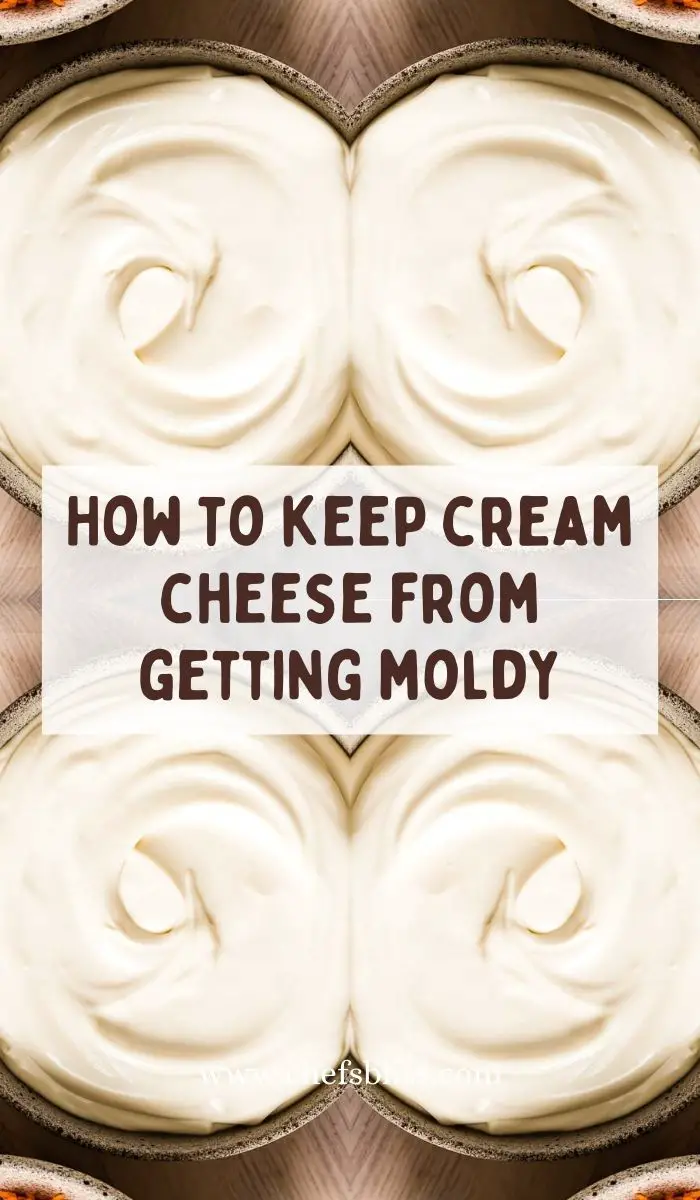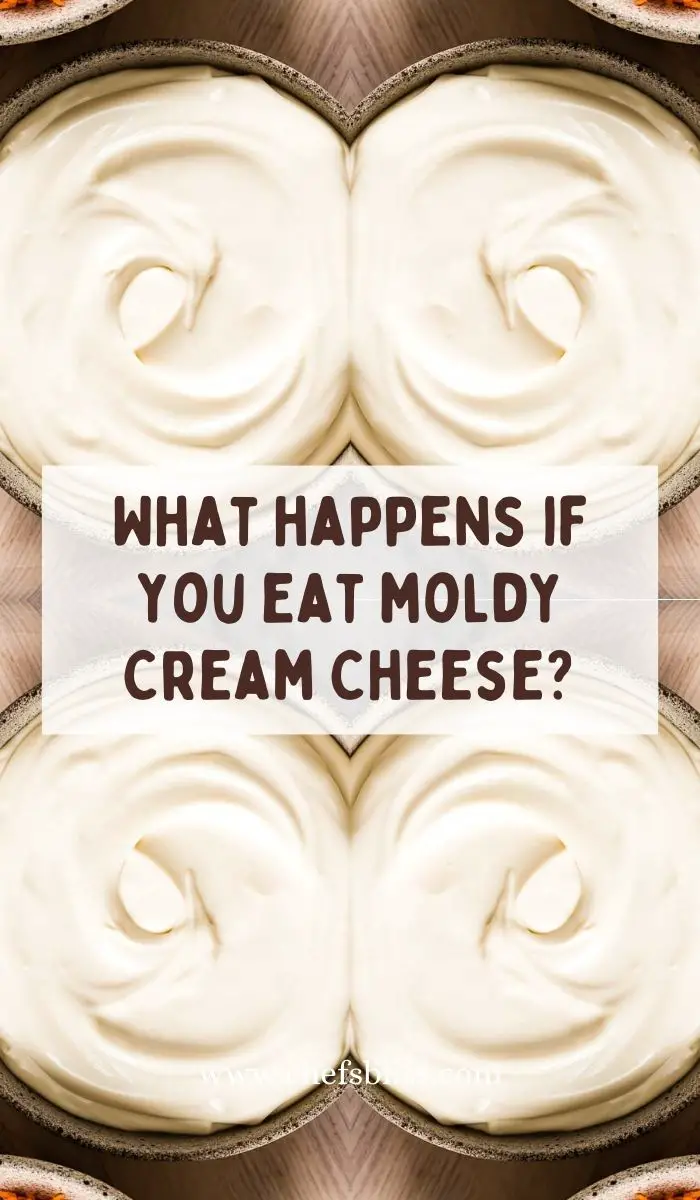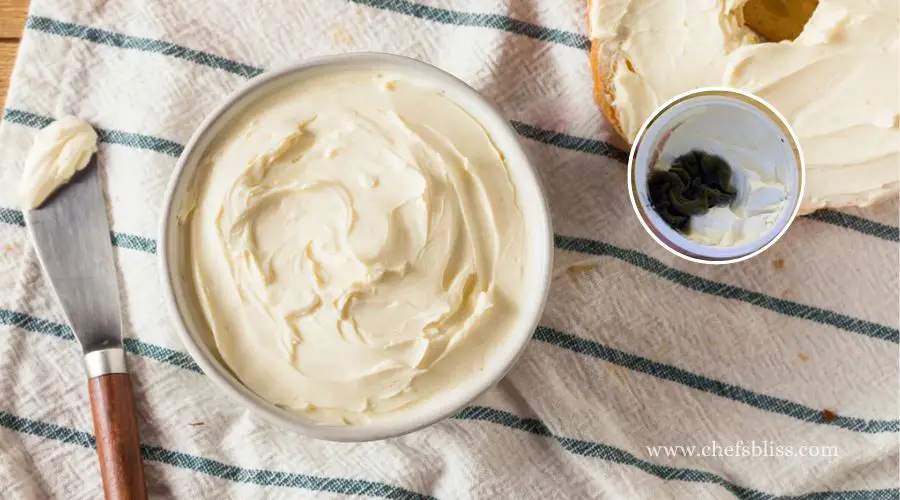Every product is independently reviewed and selected by our editors. If you buy something through our links, we may earn an affiliate commission at no extra cost to you.
Philadelphia Cream Cheese is a beloved kitchen staple that adds a creamy and indulgent touch to countless recipes.
However, like any perishable item, cream cheese is not immune to the threat of mold.
In this article, we’ll delve into the reasons behind Philadelphia Cream Cheese mold, ways to prevent it, and share some useful tips to ensure your favorite spread stays mold-free.
Can you still use Philadelphia cream cheese with mold?

It is not recommended to use Philadelphia Cream Cheese that has mold on it.
Mold can produce mycotoxins, which are harmful substances that can pose health risks if consumed.
Even if the mold is only present on the surface and the rest of the product appears unaffected, it is best to discard the entire container.
Why does Philadelphia cream cheese mold so fast?
Several factors can contribute to mold growth on Philadelphia Cream Cheese.
Understanding these factors is essential for preventing mold development and ensuring the freshness and safety of the product.

Here are some key contributors to mold growth:
Temperature:
Cream cheese should be stored at consistently low temperatures. Mold thrives in warmer conditions, so keeping the product refrigerated below 40°F (4°C) is crucial.
Fluctuations in temperature, such as leaving the cream cheese at room temperature for extended periods, can promote mold growth.
Moisture:
Mold requires moisture to grow, and cream cheese is no exception.
Excessive moisture, whether from improper storage or condensation, can create an environment conducive to mold development.
It’s essential to keep the cream cheese packaging sealed tightly to prevent moisture intrusion.
Air Exposure:
Oxygen exposure can contribute to mold growth. When the cream cheese container is not properly sealed, airborne mold spores can land on the surface and multiply.
Always seal the packaging tightly after each use to minimize the risk of contamination.
Cross-Contamination:
Contaminated utensils, hands, or surfaces can introduce mold spores to the cream cheese.
It’s crucial to practice good hygiene when handling the product.
Wash hands thoroughly before touching the cream cheese, use clean utensils, and avoid cross-contamination from other food items.
Product Quality and Handling during Manufacturing:
The quality control measures during the manufacturing process play a significant role.
If there’s a lapse in hygiene or if the cream cheese comes into contact with mold spores during production, it can contribute to mold growth.
Proper handling, sanitation, and quality checks are essential at every stage.
Packaging Integrity:
Damaged or compromised packaging can expose the cream cheese to external contaminants, including mold spores.
Check the packaging for any signs of damage before purchase and ensure that the seal is intact after opening.
Storage Time:
Cream cheese has a limited shelf life, even when stored properly. Extended storage can increase the risk of mold growth, especially if the product is nearing its expiration date.
It’s advisable to consume the cream cheese within a reasonable timeframe to enjoy it at its best quality.
How do you keep philadelphia cream cheese from getting moldy?
To prevent Philadelphia Cream Cheese from getting moldy, it’s essential to follow proper storage and handling practices.

Here are some tips to keep your cream cheese fresh and mold-free
Refrigerate Promptly:
After each use, make sure to refrigerate the cream cheese promptly. Perishable items like cream cheese should be stored at temperatures below 40°F (4°C) to inhibit mold growth.
Avoid leaving it at room temperature for extended periods.
Use Airtight Containers:
If you remove the cream cheese from its original packaging, transfer it to an airtight container.
Airtight containers help prevent exposure to air and moisture, reducing the risk of mold development.
Seal the Original Packaging:
If you choose to keep the cream cheese in its original packaging, ensure that you seal it tightly after each use.
This helps maintain the freshness and prevents airborne mold spores from entering.
Keep It Dry:
Moisture promotes mold growth, so make sure the cream cheese and its packaging remain dry.
Wipe off any condensation that may form inside the packaging or on the cream cheese itself.
Check Expiration Dates:
Always check the expiration date on the cream cheese packaging before purchase and use.
Consuming the product within the recommended timeframe helps ensure its quality and safety.
Clean Hands and Utensils:
Wash your hands thoroughly before handling cream cheese, and use clean utensils to avoid introducing contaminants. Avoid double-dipping utensils to prevent cross-contamination.
Inspect Before Use:
Before using the cream cheese, visually inspect it for any signs of mold. Discard the product if you notice any discoloration, unusual texture, or off-putting odor.
Store Away from Strong Odors:
Cream cheese can absorb odors from strong-smelling foods. Store it away from items with strong odors to maintain its original flavor and quality.
Regularly Clean the Refrigerator:
Ensure your refrigerator is clean and well-maintained. Regularly clean shelves and drawers to prevent the growth of mold that could potentially transfer to the cream cheese.
Consume Promptly:
Cream cheese has a limited shelf life, even when stored correctly. Consume it within a reasonable timeframe to enjoy it at its best quality and reduce the risk of mold growth.
By following these tips, you can extend the freshness of your Philadelphia Cream Cheese and minimize the risk of mold contamination.
Proper storage and hygiene practices play a crucial role in ensuring that your cream cheese remains delicious and safe for consumption.
White vs green vs black vs blue mold on Philadelphia cream cheese
Mold on Philadelphia Cream Cheese or any food product can come in various colors, and different colors may indicate different types of molds.
Here’s a general overview of what each color might suggest:
White Mold:
- White mold is one of the most common types and is generally considered less harmful than some other colors.
- It may appear as fuzzy patches or spots on the surface.
- While some white molds are harmless, others may produce mycotoxins that can be harmful if ingested.
Green Mold:
- Green mold is often caused by fungi like Penicillium.
- Some types of green mold are used in the production of certain cheeses (e.g., blue cheese), but not all green molds are safe for consumption.
- If you find green mold on cream cheese, it’s advisable to discard the entire portion, as some green molds can produce mycotoxins.
Black Mold:
- Black mold is less common but can be more concerning.
- Some black molds, such as Aspergillus niger, may produce mycotoxins that can be harmful.
- If you discover black mold on cream cheese, it’s best to discard the entire affected portion.
Blue Mold:
- Blue mold is often associated with certain types of cheeses, like blue cheese.
- While blue mold is intentionally introduced in some cheeses, not all blue molds are safe.
- If you find unintended blue mold on cream cheese, it’s advisable to discard the affected portion.
Regardless of the color, it’s important to note that visible mold indicates the presence of spores, and mycotoxins may be present even if the mold is not easily visible.
As a general rule, it’s safer to discard any portion of cream cheese with visible mold rather than attempting to remove it.
Identification Of Safe Vs. Unsafe Mold on Philadelphia cream cheese
Identifying safe vs. unsafe mold on Philadelphia Cream Cheese can be challenging, as the appearance alone doesn’t always provide a clear distinction.
However, some general guidelines can help you assess whether the mold is likely safe or potentially harmful.
Safe Mold:
In some cases, molds used intentionally in the production of certain cheeses, such as blue cheese, can be considered safe for consumption.
These molds are carefully controlled during the manufacturing process, and their presence is part of the desired characteristics of the cheese.
If you find blue or green mold on cream cheese, it’s crucial to differentiate between intentional and unintentional contamination.
If the mold appears consistent with the type used in blue cheese and is isolated to specific areas, it may be safe.
However, exercise caution and consider your personal risk tolerance.
Unsafe Mold:
Colors like black or dark green are often associated with molds that can produce mycotoxins, which can be harmful when ingested.
While not all molds produce mycotoxins, the presence of these darker colors on cream cheese is a cause for concern.
Black mold, in particular, may indicate the presence of molds such as Aspergillus niger, which can produce mycotoxins associated with health risks.
If you encounter black or very dark green mold on cream cheese, it is advisable to err on the side of caution and refrain from consuming it.
What happens if you eat moldy Philadelphia Cream Cheese?

Consuming moldy Philadelphia Cream Cheese can pose health risks, as molds can produce mycotoxins, which are toxic substances.
The severity of the health risks depends on the type of mold present and individual susceptibility.
Common symptoms of mycotoxin exposure can include nausea, vomiting, diarrhea, and in some cases, more severe reactions.
Individuals with compromised immune systems, allergies, or respiratory conditions may be more susceptible to adverse effects.
In extreme cases, certain molds can produce mycotoxins linked to long-term health issues.
What does mold on Philadelphia Cream Cheese look like?
Mold on Philadelphia Cream Cheese can appear in various colors, including white, green, blue, and black.
The appearance may range from fuzzy patches or spots to a slimy texture. White molds are common and may or may not produce mycotoxins.
Green and blue molds are sometimes intentionally introduced in specific cheeses but can also indicate spoilage.
Black molds, especially on cream cheese, are more likely to be associated with harmful varieties that may produce mycotoxins.
Regardless of color, any visible mold on cream cheese should be treated with caution.
What should I do if I accidentally ate moldy Philadelphia Cream Cheese?
If you have accidentally consumed moldy Philadelphia Cream Cheese, monitor yourself for any adverse symptoms.
If you experience nausea, vomiting, diarrhea, or any unusual reactions, seek medical attention promptly.
It is essential to contact a healthcare professional, especially if you belong to high-risk groups, such as individuals with compromised immune systems, pregnant women, or those with respiratory conditions.
Additionally, if you discover that you have eaten moldy cream cheese, refrain from consuming any more of it, and discard the remaining portion to prevent further exposure.
Prevention is key, so practice proper storage and inspection of food items to minimize the risk of accidental mold ingestion in the future.
Effects Of Mold On Philadelphia Cream Cheese
Mold is a common issue that can occur on Philadelphia Cream Cheese, and it can have several effects on the texture, flavor, and even potential health risks.
It is important to be aware of these effects to ensure the safe consumption of this popular dairy product.
Changes In Texture And Flavor
Mold growth on Philadelphia Cream Cheese can lead to noticeable changes in texture and flavor.
When mold develops, it can create a fuzzy or slimy texture on the surface of the cheese. This texture can make the cheese unappetizing and unpleasant to eat.
Besides texture, mold can also affect the flavor of cream cheese. It can introduce off-flavors, making the cheese taste sour, bitter, or simply unpleasant.
These changes in texture and flavor can significantly impact the overall sensory experience of consuming Philadelphia Cream Cheese.
Potential Health Risks
Moldy Philadelphia Cream Cheese presents potential health risks. Mold spores can penetrate the cheese, even if they are not immediately visible.
Consuming moldy dairy products can cause allergic reactions or respiratory problems in susceptible individuals.
It can also lead to food poisoning symptoms, such as nausea, vomiting, and diarrhea.
It is important to note that not all molds are safe to consume. Certain molds produce mycotoxins, which are toxic compounds that can have adverse effects on human health.
Therefore, it is crucial to discard any cream cheese that shows signs of mold to mitigate potential health risks.
Creative Uses For Moldy Philadelphia Cream Cheese
When faced with moldy Philadelphia cream cheese, all is not lost.
In fact, there are creative ways to repurpose moldy cream cheese in your culinary endeavors while also reducing food waste.
Repurposing Moldy Cheese In Recipes
If you spot mold on your Philadelphia cream cheese, consider transforming it into delicious dishes instead of throwing it away.
Here are some ideas:
- Moldy Cheese Dip: Blend the moldy cream cheese with herbs and spices to create a flavorful dip.
- Stuffed Mushrooms: Mix the moldy cream cheese with breadcrumbs and stuff it into mushroom caps before baking.
- Cheese Spread: Combine the moldy cream cheese with other cheeses and ingredients to make a unique spread for bread or crackers.
Reducing Food Waste
By repurposing moldy Philadelphia cream cheese in your recipes, you are actively reducing food waste.
Embracing creativity in the kitchen not only saves money but also contributes to environmental sustainability.
Conclusion
Understanding the causes of Philadelphia Cream Cheese mold and implementing preventive measures is crucial for ensuring a delightful and safe culinary experience.
By following proper storage practices, maintaining cleanliness, and being vigilant, you can savor your favorite cream cheese without the worry of unwanted mold growth.
Remember that soft cheeses like cream cheese should be discarded if mold is present, but with a few tweaks and additions, you can turn that moldy cheese into a culinary delight.

